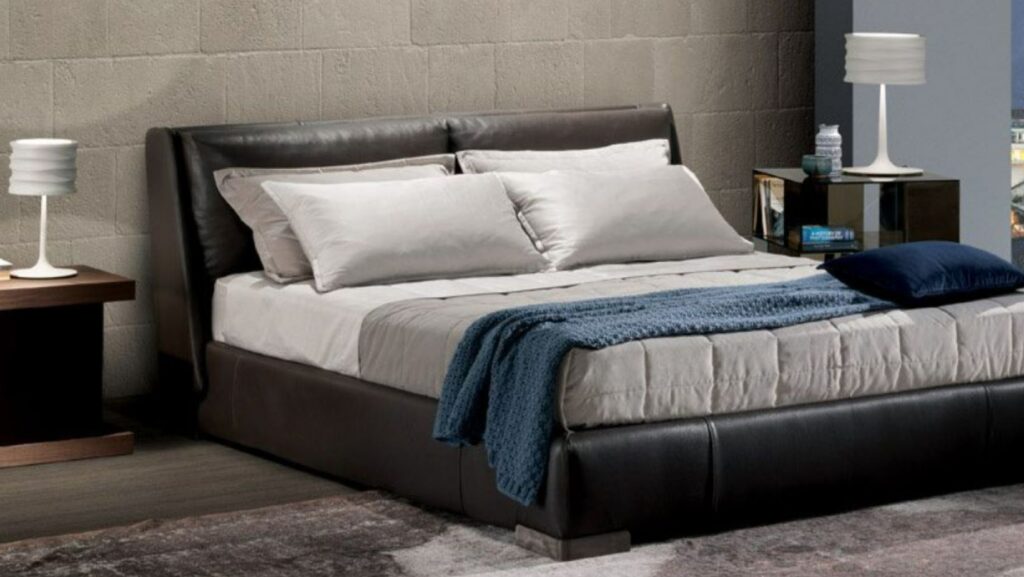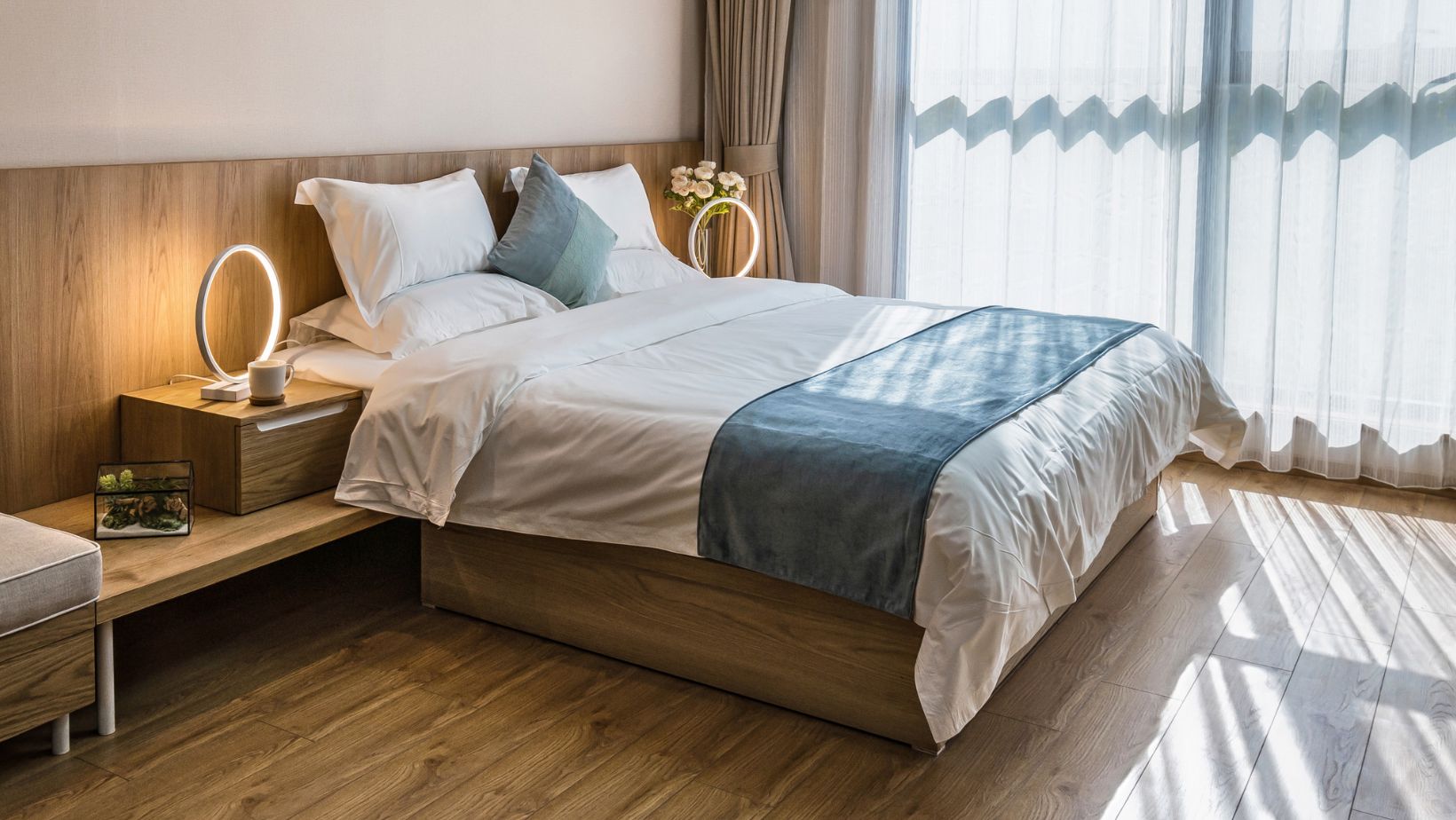Italian bedroom design emphasizes both aesthetic refinement and functionality. Structural elements prioritize balance and symmetry, creating an inviting atmosphere suited for relaxation. Furniture is crafted with high-quality materials, ensuring durability while maintaining visual appeal. Common choices include solid wood, metal accents, and upholstered surfaces, contributing to both comfort and stability.
Material selection plays a key role in defining the character of an Italian bedroom. Natural wood finishes provide warmth, while leather and fine fabrics add texture and sophistication. Marble and ceramic details further enhance elegance, complementing architectural features such as decorative moldings or paneling.
Practical considerations include space optimization and ergonomic design. Storage solutions such as integrated wardrobes and bedside tables maximize usability without compromising style. Lighting placement enhances ambiance, with layered options supporting functionality and visual harmony. Choosing high-quality materials and structured layouts ensures an Italian bedroom remains both visually cohesive and highly functional over time.
Overview of Italian Bedroom Design: Core Characteristics and Functional Aspects
An Italian bedroom reflects a combination of aesthetic refinement and functional efficiency. The design often incorporates symmetrical layouts, ensuring balance and a visually cohesive environment. High-quality materials such as solid wood, marble, and fine textiles enhance both durability and sophistication. Attention to craftsmanship ensures structural integrity while maintaining an inviting atmosphere.
Core characteristics include rich textures, warm color palettes, and architectural detailing. Upholstered headboards, carved wooden elements, and decorative moldings contribute to an elegant yet comfortable setting. Natural lighting plays an essential role, with well-positioned fixtures complementing overall ambiance.
Functionality remains a priority in an Italian bedroom. Integrated storage solutions, including built-in wardrobes and bedside tables, optimize space without compromising style. Furniture arrangement supports ergonomic comfort, allowing seamless movement within the room. Selecting durable materials and structured layouts ensures a well-balanced interior that meets both practical needs and artistic preferences over time.
Material Choices for Furniture: Wood, Metal, Upholstery, and Their Practical Benefits
Material selection plays a crucial role in defining the structure and aesthetics of an Italian bedroom. Wood remains a preferred choice for furniture, offering durability, natural warmth, and intricate craftsmanship. High-quality hardwoods such as walnut, oak, and beech provide strength, ensuring stability and resistance to wear over time. Finishing techniques enhance texture and visual appeal, maintaining a refined look.
Metal is often integrated into modern Italian bedroom designs, providing structural support and sleek aesthetics. Stainless steel and wrought iron contribute to stability while complementing minimalist and contemporary styles. Metal frames reinforce durability, ensuring long-term reliability without compromising elegance.
Upholstered furniture enhances comfort, incorporating materials such as leather, velvet, and linen. Soft textures and ergonomic padding improve relaxation, creating an inviting environment. Upholstery also contributes to visual harmony, balancing traditional and modern elements within an Italian bedroom. Selecting the right material ensures durability, functionality, and aesthetic cohesion.
Spatial Planning and Layout: Optimizing Room Configuration for Comfort and Efficiency
Effective spatial planning enhances both comfort and efficiency in interior design. Thoughtful arrangement of furniture ensures smooth movement and maximizes functionality, creating a balanced and visually appealing environment. Strategic placement of essential elements supports daily activities while optimizing available space.
Room configuration influences usability and aesthetic cohesion. Selecting appropriately sized furniture prevents overcrowding while maintaining openness. Functional zones, such as seating areas or workspaces, should be clearly defined to promote organization. The integration of storage solutions minimizes clutter, enhancing practicality without compromising style.
Lighting and ventilation contribute to overall comfort. Natural light improves ambiance, while artificial illumination ensures usability in different settings. Ventilation strategies, including window placement and airflow management, support a fresh and breathable atmosphere.
By prioritizing spatial efficiency, homeowners can create harmonious interiors that accommodate both practical needs and aesthetic preferences. Thoughtful design choices enhance usability while maintaining a well-balanced and visually engaging room layout.
Style Variations: Selecting the Right Italian Bedroom Theme for Different Preferences
Italian bedroom themes vary widely, allowing homeowners to choose styles that align with personal preferences. Classic designs emphasize rich wooden furniture, intricate carvings, and warm color palettes that create an elegant atmosphere. Upholstered headboards and decorative moldings enhance sophistication, making the space visually refined and inviting.
Modern Italian bedrooms focus on clean lines, neutral tones, and minimalist structures. Sleek materials such as polished wood and metal accents contribute to a contemporary aesthetic. Functional elements like integrated storage and streamlined furniture maintain practicality while preserving stylish simplicity.
Transitional designs merge traditional and modern influences, balancing ornate details with understated elegance. These bedrooms feature versatile furniture and muted tones, ensuring adaptability to evolving decor preferences. Rustic Italian themes incorporate natural materials, earthy hues, and textured surfaces, evoking a warm and comfortable setting.
Selecting the right theme involves considering proportions, materials, and decorative elements, ensuring a harmonious and aesthetically pleasing bedroom arrangement.
Durability and Maintenance: Factors Affecting Longevity and Care Guidelines for Furniture and Decor
Durability in furniture and decor depends on material quality, structural integrity, and maintenance practices. Hardwoods such as oak and walnut offer long-lasting resilience, while metal frames provide additional reinforcement. Upholstery fabrics, including leather and high-density textiles, influence wear resistance, ensuring longevity in daily use.
Maintenance plays a crucial role in preserving furniture condition. Regular cleaning prevents dust buildup, while appropriate conditioning protects surfaces from environmental damage. Wooden elements benefit from periodic polishing, maintaining texture and preventing deterioration. Upholstered furniture requires careful handling, with fabric treatments enhancing durability against stains and moisture exposure.
Environmental factors affect longevity. Direct sunlight can cause fading, while excessive humidity may weaken structural stability. Positioning furniture strategically reduces exposure to damaging conditions. Additionally, routine inspections help identify signs of wear, allowing timely repairs. Following care guidelines ensures furniture and decor retain their aesthetic appeal and functional efficiency over extended periods.
Comparison With Other Design Trends: Distinctive Features of Italian Bedroom Concepts
Italian bedroom concepts stand out through their emphasis on balance, elegance, and high-quality craftsmanship. Unlike contemporary minimalist trends that focus on simplicity, Italian design incorporates intricate detailing and luxurious materials. Solid wood furniture, marble accents, and fine textiles contribute to both aesthetic richness and durability.
Traditional Italian bedrooms favor warm color palettes and decorative elements such as carved wood and upholstered headboards. This differs from Scandinavian trends, which rely on light tones and understated forms to create an airy atmosphere. Italian interiors embrace texture variety, blending smooth surfaces with ornate patterns for visual depth.
Functionality plays an integral role in Italian bedroom concepts. Built-in storage solutions ensure organization while maintaining stylistic harmony. Compared to industrial themes, which highlight raw materials and exposed structures, Italian design prioritizes refinement and symmetry. The combination of classical influence and modern adaptability makes Italian bedrooms timeless while maintaining a welcoming and sophisticated ambiance.
Sustainability and Production Ethics: Environmental Considerations in Manufacturing
Sustainability in manufacturing relies on responsible material sourcing, energy efficiency, and waste reduction. Companies prioritize eco-friendly raw materials, ensuring minimal environmental impact while maintaining production quality. Recycled and biodegradable materials support conservation efforts, reducing dependence on non-renewable resources.
Ethical production practices emphasize fair labor standards and safe working conditions. Manufacturers implement policies that promote employee welfare, ensuring transparency in supply chains. Compliance with global sustainability regulations reinforces corporate responsibility, preventing exploitation and encouraging ethical business operations.
Energy-efficient processes reduce carbon emissions, contributing to environmental preservation. Advanced technologies optimize resource consumption, lowering industrial waste and supporting long-term ecological balance. Implementing green initiatives, such as reduced packaging and recycling programs, further minimizes environmental footprint.
By adopting sustainable methods and ethical policies, manufacturers enhance product longevity while protecting natural ecosystems. Responsible production benefits both consumers and the planet, reinforcing the importance of ecological awareness in modern industry.
Purchasing Guidelines: Essential Factors to Evaluate When Selecting Italian Bedroom Furniture
Selecting Italian bedroom furniture requires careful evaluation of materials, craftsmanship, and functionality. High-quality wood, such as walnut or oak, ensures durability and structural integrity. Fine upholstery, including leather or premium fabrics, enhances comfort while maintaining visual sophistication. Metal accents provide stability and contemporary appeal, reinforcing longevity in daily use.
Design consistency plays a key role in achieving a harmonious interior. Choosing furniture that complements architectural features and existing decor creates a well-balanced aesthetic. Proportions and symmetry influence spatial organization, ensuring optimal placement without overcrowding.
Functionality must align with practical needs. Storage solutions, such as integrated wardrobes and bedside tables, enhance usability while preserving style. Ergonomic features contribute to comfort, promoting relaxation within the space.
Budget considerations should reflect craftsmanship and material longevity. Investing in well-constructed furniture guarantees lasting performance, combining aesthetic elegance with functional reliability. Thoughtful selection ensures a refined and cohesive bedroom arrangement.
User Experience and Long-Term Usability: Practical Insights for Homeowners and Designers
User experience and long-term usability are essential when selecting furniture for residential or professional spaces. High-quality craftsmanship ensures durability, preventing structural weakening over time. Ergonomic design contributes to comfort, supporting posture while maintaining aesthetic refinement.
Material selection influences usability, with hardwood, metal, and premium upholstery providing resilience. Proper maintenance extends furniture lifespan, preserving texture and functionality.
Homeowners and designers should evaluate spatial compatibility and adaptability, ensuring a cohesive layout. Practical considerations include stability, cleaning requirements, and long-term investment value. Thoughtful selection enhances daily functionality while maintaining sophisticated design elements in diverse interior arrangements.




More Stories
What Is The Ideal Humidity Inside A Home
Hygge Interior Design: Creating Comfort and Coziness in Your Home
Inside The Home Alone House: A Sneak Peek into Christmas Nostalgia